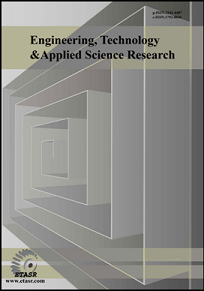A Study of Modeling Techniques of Building Energy Consumption
Abstract
Residential energy consumption accounts for more than 40% of the total energy consumed in the world. The residential sector is the biggest consumer of energy in every country, and therefore focusing on the reduction of energy consumption in this sector is very important. The energy consumption characteristics of the residential sector are very complicated and the variables affecting the consumption are wide and interconnected, so more detailed models are needed to assess the impact of adopting efficient and renewable energy technologies suitable for residential applications. The aim of this paper is to review some of the techniques used to model residential energy consumption. They are gathered in two categories: top-down and bottom-up. The top-down approach considers the residential sector as an energy sink and does not take into account the individual end-uses. The bottom-up approach uses the estimated energy consumption of a representative set of individual houses and extrapolates it to regional and national levels. Based on the strengths, shortcomings, and purposes, an analytical review of each technique, is provided along with a review of models reported in the literature.
Keywords:
energy consumption, modeling techniques, residential sector, top-down, bottom-up, CO2 emissionsDownloads
References
Energy Information Administration, International Energy Outlook 2016 With Projections to 2040, Technical Report Series, Vol. 484, EIA, 2016
O. G. Santin, Actual energy consumption in dwellings: The effect of energy performance regulations and occupant behavior, IOS Press, 2010
L. Lutzenhiser, “A question of control: Alternative patterns of room air-conditioner use”, Energy and Buildings, Vol. 18, No. 3-4, pp. 193–200, 1992 DOI: https://doi.org/10.1016/0378-7788(92)90013-7
H. Jeeninga, M. Uyterlinde, J. Uitzinger, Energieverbruik van energiezuinige woningen, ECN-C-01-072, ECN, 2001 (in Dutch)
L. G. Swan, V. I. Ugursal, “Modeling of end-use energy consumption in the residential sector: A review of modeling techniques”, Renewable and Sustainable Energy Reviews, Vol. 13, No. 8, pp. 1819-1835, 2009 DOI: https://doi.org/10.1016/j.rser.2008.09.033
L. Itard, F. Meijer, Towards sustainable northern European housing stock: Figures, facts and future, IOS Press, 2008
S. D. Tuladhar, M. Yuan, P. Bernstein, W. D. Montgomery, A. Smith, “A top–down bottom–up modeling approach to climate change policy analysis”, Energy Economics, Vol. 31, pp. S223-S234, 2009 DOI: https://doi.org/10.1016/j.eneco.2009.07.007
C. Bohringer, T. F. Rutherford, “Combining bottom-up and top-down”, Energy Economics, Vol. 30, No. 2, pp. 574-596, 2008 DOI: https://doi.org/10.1016/j.eneco.2007.03.004
C. Bohringer, T. F. Rutherford, “Integrated assessment of energy policies: Decomposing top-down and bottom-up”, Journal of Economic Dynamics and Control, Vol. 33, No. 9, pp. 1648-1661, 2009 DOI: https://doi.org/10.1016/j.jedc.2008.12.007
N. Strachan, R. Kannan, “Hybrid modelling of long-term carbon reduction scenarios for the UK”, Energy Economics, Vol. 30, No. 6, pp. 2947-2963, 2008 DOI: https://doi.org/10.1016/j.eneco.2008.04.009
N. Behidj, J. Bernier, S. Blais, D. Demers, S. Genest, C. Ramsum, K. Sassi, Energy use data handbook: 1990 and 1998 to 2004, Natural Resources Canada, 2006
M. Jomaa, M. Abbes, F. Tadeo, A. Mami, “Greenhouse modeling, validation and climate control based on fuzzy logic”, Engineering, Technology & Applied Science Research, Vol. 9, No. 4, pp. 4405-4410, 2019 DOI: https://doi.org/10.48084/etasr.2871
A. S. Saidi, M. B. Slimene, M. A. Khlifi, “Transient stability analysis of photovoltaic system with experimental shading effects”, Engineering, Technology & Applied Science Research, Vol. 8, No. 6, pp. 3592-3597, 2018 DOI: https://doi.org/10.48084/etasr.2384
S. M. Wahba, B. A. Kamel, K. M. Nassar, A. S. Abdelsalam, “Effectiveness of green roofs and green walls on energy consumption and indoor comfort in arid climates”, Civil Engineering Journal, Vol. 4, No. 10, pp. 2284-2295, 2018 DOI: https://doi.org/10.28991/cej-03091158
U. M. Burciaga, P. V. Saez, F. J. H. Ayon, “Strategies to reduce CO2 emissions in housing building by means of CDW”, Emerging Science Journal, Vol. 3, No. 5, pp. 274-284, 2019 DOI: https://doi.org/10.28991/esj-2019-01190
S. Wahba, B. Kamil, K. Nassar, A. Abdelsalam, “Green envelop impact on reducing air temperature and enhancing outdoor thermal comfort in arid climates”, Civil Engineering Journal, Vol. 5, No. 5, pp. 1124-1135, 2019 DOI: https://doi.org/10.28991/cej-2019-03091317
Energy Information Administration, Annual energy review 2006, DOE/EIA-0384(2006), EIA, 2006
Department for Business Enterprise & Regulatory Reform, Energy consumption in the United Kingdom, 2007
National Bureau of Statistics of China, China statistical yearbook 2005, China Statistics Press, 2005
Office of Energy Efficiency, 2003 survey of household energy use (SHEU)–detailed statistical report, Natural Resources Canada, 2006
Energy Information Administration, Residential energy consumption survey, U.S. Energy Information Administration, 2001
Department for Communities and Local Government. English house condition survey: technical report (2005 edition). West Yorkshire: Communities and Local Government Publication Centre, 2007
International Energy Agency, Mapping the energy future: Energy modelling and climate change policy, International Energy Agency, 1998
E. Hirst, W. Lin, J. Cope, “A residential energy use model sensitive to demographic, economic, and technological factors”, Quarterly Review of Economics & Business, Vol. 17, No. 2, pp. 7-22, 1977
E. Hirst, “A model of residential energy use”, Simulation, Vol. 30, No. 3, pp. 69-74, 1978 DOI: https://doi.org/10.1177/003754977803000301
D. L. Oneal, E. Hirst, “An energy use model of the residential sector”, IEEE Transactions on Systems, Man, and Cybernetics, Vol. SMC-10, pp. 749-755, 1980 DOI: https://doi.org/10.1109/TSMC.1980.4308396
Downloads
How to Cite
License
Authors who publish with this journal agree to the following terms:
- Authors retain the copyright and grant the journal the right of first publication with the work simultaneously licensed under a Creative Commons Attribution License that allows others to share the work with an acknowledgement of the work's authorship and initial publication in this journal.
- Authors are able to enter into separate, additional contractual arrangements for the non-exclusive distribution of the journal's published version of the work (e.g., post it to an institutional repository or publish it in a book), with an acknowledgement of its initial publication in this journal.
- Authors are permitted and encouraged to post their work online (e.g., in institutional repositories or on their website) after its publication in ETASR with an acknowledgement of its initial publication in this journal.





